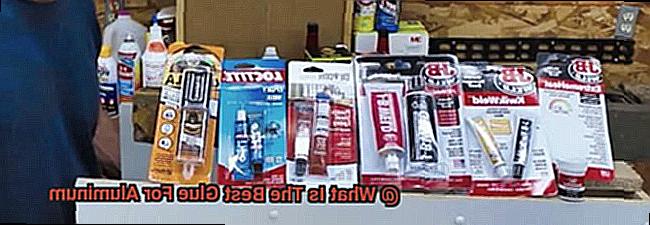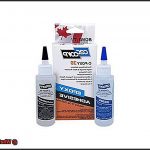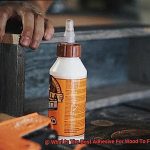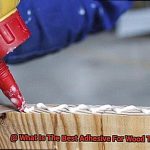Picture this: you’re knee-deep in a project, meticulously assembling aluminum pieces, when suddenly you realize you’re missing a crucial ingredient – a trustworthy glue. Cue the frustration as you ponder, “What’s the best glue for aluminum?” But fear not, my friends. Today, we dive headfirst into the world of adhesives, unraveling the secret to achieving flawless bonds with this versatile metal.
But before we embark on this enlightening journey, let’s address the elephant in the room. Aluminum, with its lightweight and corrosion-resistant properties, poses a unique challenge when it comes to sticking stuff together. Its smooth surface plays hard to get with traditional glues, leaving many puzzled craftsmen yearning for guidance.
In this comprehensive guide, we’ll unveil the crème de la crème of glues for aluminum. Armed with this knowledge, you’ll be ready to conquer any bonding endeavor – from quick household fixes to heavy-duty industrial applications. We’ve scoured through countless options to present you with reliable choices that seamlessly fuse aluminum materials together.
Get ready to explore an array of adhesive types that pack their own punches. We’ll shine a spotlight on epoxy glues, cyanoacrylates (fancy word alert.), polyurethane adhesives and more. No matter if you’re tinkering away in your garage or tackling a professional fabrication job – we’ve got your back. By the time we’re done here, you’ll have all the know-how needed to make an informed decision tailored specifically to your needs.
Are you pumped up yet? It’s time to unlock the mysteries of aluminum adhesion. Stick around for the upcoming chapters where we’ll embark on an exhilarating exploration. Together, we’ll demystify the world of aluminum glues and arm you with expert tips and tricks to conquer any sticky situation. Say goodbye to frustration and hello to flawless aluminum connections.
Types of Adhesives Suitable for Bonding Aluminum
Contents
- 1 Types of Adhesives Suitable for Bonding Aluminum
- 2 Factors to Consider When Choosing the Best Glue
- 3 Epoxy Adhesive: Benefits and Drawbacks
- 4 Cyanoacrylate Glue: Benefits and Drawbacks
- 5 Structural Adhesives: Benefits and Drawbacks
- 6 Preparing the Surface for Gluing Aluminum
- 7 Applying the Adhesive to Bond Aluminum
- 8 Curing Times for Different Adhesives
- 9 Conclusion
When it comes to bonding aluminum, choosing the right adhesive is crucial for achieving a strong and durable bond. Fortunately, there are several types of adhesives that work exceptionally well with aluminum, each offering its own unique properties and benefits. Let’s delve into the different types of adhesives suitable for bonding aluminum:
Epoxy Adhesives
Renowned for their exceptional bonding strength and versatility, epoxy adhesives are a top choice for bonding aluminum. These adhesives consist of two parts – a resin and a hardener – that must be thoroughly mixed before application. Once cured, epoxy adhesives form a robust bond that exhibits excellent resistance to heat, chemicals, and moisture. Moreover, they can fill gaps and even be sanded or painted over, making them suitable for various applications.
Cyanoacrylate Glue
Also known as super glue, cyanoacrylate glue is a fast-acting adhesive that instantly forms a bond when exposed to moisture. It offers impressive bonding strength and is ideal for small-scale projects or quick repairs. However, it may not be suitable for applications where constant stress or exposure to harsh environments is expected.
Structural Adhesives
For joining aluminum with other materials like glass or ceramics, structural adhesives such as polyurethane or acrylic adhesives are excellent options. These adhesives provide high-strength bonding and exhibit good resistance to temperature and moisture. They find widespread use in industries such as automotive, aerospace, and construction.
Silicone Adhesives
If flexibility and high-temperature resistance are critical requirements for your aluminum bonding project, silicone adhesives are an excellent choice. These adhesives are widely used in automotive and aerospace industries due to their ability to withstand temperature fluctuations. In addition to their flexibility, silicone adhesives offer exceptional resistance to moisture and can create a waterproof seal when bonding aluminum surfaces.
Specialized Adhesives
There are specialized adhesives specifically formulated for bonding aluminum. These adhesives often contain additives that enhance their bonding capabilities with aluminum surfaces. They may also possess properties such as high-temperature resistance or flexibility, making them ideal for specific applications.
When selecting an adhesive for bonding aluminum, several factors must be considered. These include the required bond strength, operating conditions (such as temperature and humidity), surface preparation requirements, and curing time of the adhesive. It is essential to carefully follow the manufacturer’s instructions and conduct small-scale tests before applying the adhesive to the full project.
In conclusion, there are various types of adhesives that can effectively bond aluminum. Epoxy adhesives, cyanoacrylate glues, structural adhesives like polyurethane or acrylic adhesives, and silicone adhesives are commonly used options. The choice of adhesive depends on the specific project requirements, including bond strength, operating conditions, and surface preparation.
Factors to Consider When Choosing the Best Glue
Selecting the right glue for aluminum bonding is crucial for achieving a strong and durable bond. With numerous options available, it can be overwhelming to find the perfect glue.
As an expert in the field, I’m here to guide you through the key factors to consider when choosing the best glue for aluminum.
Adhesive Strength:
Aluminum’s lightweight and smooth nature demands a glue with exceptional adhesive strength. Look for glues specifically designed for metal bonding, as they offer high tensile strength. This ensures a secure and long-lasting bond that won’t let you down.
Compatibility:
To ensure successful bonding, it’s essential to choose a glue that is compatible with both aluminum and the material you’re bonding it to. Some glues may work well on aluminum but struggle to adhere properly to materials like plastic or wood. Always check the product label or manufacturer’s guidelines for compatibility information.
Temperature Resistance:
Aluminum is subject to extreme temperature variations, so selecting a glue with high-temperature resistance is vital. This ensures that the adhesive properties of the glue remain intact, even in hot environments. Don’t let temperature fluctuations weaken your bond.
Drying Time:
Consider the drying time of the glue, especially if you’re working on time-sensitive projects. Opt for fast-drying glues that help you complete your project efficiently. Avoid unnecessary delays caused by lengthy drying times.
Application Method:
Different glues come with various application methods, such as squeeze tubes, spray bottles, or brush-on applicators. Choose a glue with an application method that suits your project needs. For intricate or small-scale projects, precise applicators can provide more control and accuracy.
Chemical Resistance:
Depending on the purpose of your aluminum object, it may come into contact with different chemicals or solvents. To ensure the bond remains intact, select a glue that offers chemical resistance. This protects against potential corrosion and maintains a strong bond, even in the presence of harsh substances.
Flexibility:
Aluminum experiences slight movements or vibrations, making flexibility an important factor to consider when choosing a glue. Look for glues that offer a degree of flexibility, allowing the bond to withstand these movements without cracking or breaking. Don’t compromise on durability.
Epoxy Adhesive: Benefits and Drawbacks
In the world of aluminum bonding, finding the perfect adhesive can be a daunting task. But fear not. As an expert in the field, I’m here to guide you through the ins and outs of using epoxy adhesive. In this article, we’ll explore the incredible benefits and potential drawbacks of harnessing the power of epoxy adhesive for aluminum bonding. Get ready to discover a world of strength and versatility.
Benefits of Epoxy Adhesive for Aluminum Bonding:
Unyielding Strength:
When it comes to bonding aluminum, epoxy adhesive is a force to be reckoned with. This two-part adhesive, consisting of a resin and a hardener, undergoes a chemical reaction that creates a bond of unrivaled strength. Your aluminum structures will become impervious to high temperatures, chemicals, and impact.
Tenacious Adhesion:
Epoxy adhesive doesn’t just stick to aluminum; it forms an unbreakable bond. Smooth or rough surfaces are no match for its adhesive prowess. This versatility allows you to explore a wide range of applications with confidence.
Master of Versatility:
Epoxy adhesive refuses to be confined to aluminum alone. It’s a social butterfly that plays well with other materials too. Whether you need to unite aluminum with glass, wood, plastic, or more, epoxy adhesive is ready to embrace the challenge. Embrace the possibilities and let your creativity soar.
Bridging Gaps with Grace:
Imperfections and irregularities between aluminum surfaces are no longer obstacles but opportunities for epoxy adhesive. Its gap-filling properties ensure a tight and secure bond, bridging small gaps effortlessly. Say goodbye to weak joints and hello to lasting durability.
Drawbacks of Using Epoxy Adhesive for Aluminum Bonding:
Patience is Key:
While epoxy adhesive offers unparalleled bonding strength, it demands a little patience in return. The curing time for epoxy can be relatively long, requiring several hours or even days to achieve its maximum strength. If time is of the essence, you might want to explore alternative options.
Brittle Beauty:
Once epoxy adhesive is fully cured, it reveals a somewhat brittle nature. Applications that require flexibility or vibration resistance may not be the best fit for this adhesive. Evaluate the specific needs of your project before committing to epoxy adhesive.
Cyanoacrylate Glue: Benefits and Drawbacks
When it comes to bonding aluminum surfaces, cyanoacrylate glue, also known as super glue or instant adhesive, is a game-changer. Its lightning-fast bonding time, exceptional strength, and resistance to various elements have made it a top choice for professionals and DIY enthusiasts. However, it’s important to consider the limitations of this adhesive as well. In this article, we will delve into the captivating benefits and potential drawbacks of using cyanoacrylate glue for bonding aluminum surfaces.
Benefits:
- Fast Bonding Time: With cyanoacrylate glue, time is on your side. This adhesive sets and cures within seconds of application, allowing you to swiftly complete projects without delays. Whether you’re working on time-sensitive endeavors or need immediate strength, cyanoacrylate glue delivers.
- High Strength and Durability: Once cured, cyanoacrylate glue forms an unbreakable bond that can withstand the toughest challenges. It boasts remarkable resistance to impact, vibration, and temperature changes, making it ideal for aluminum parts exposed to harsh environments or heavy loads.
- Resistance to Moisture, Chemicals, and Solvents: No matter what liquids or substances come into contact with the bonded aluminum surfaces, cyanoacrylate glue stands firm. Its resistance to moisture, chemicals, and solvents ensures a long-lasting bond that won’t waver even in the face of challenging conditions.
- Easy to Use: Forget about complex mixing or tiresome surface treatments. Cyanoacrylate glue is a breeze to use and requires minimal preparation. Simply apply it directly to clean and dry aluminum surfaces, making it a convenient choice for professionals and DIY enthusiasts alike.
Drawbacks:
- Lack of Flexibility: While cyanoacrylate glue offers exceptional strength, it does have a downside. Over time, the bond can become brittle, especially when subjected to constant movements or vibrations. This lack of flexibility increases the risk of cracks or breaks in certain circumstances.
- Adhesion Challenges: Some aluminum alloys or treated aluminum surfaces may pose a challenge for cyanoacrylate glue. These surfaces may have low surface energy, making it difficult for the adhesive to establish a strong bond. In such cases, roughening the surface or using a primer specifically designed for promoting adhesion to aluminum becomes necessary.
Structural Adhesives: Benefits and Drawbacks
Structural adhesives possess remarkable capabilities when it comes to bonding aluminum, offering a plethora of benefits. These specialized glues have been tailored to create robust and long-lasting bonds, making them the preferred choice for a wide range of applications. In this article, we will embark on a journey into the world of structural adhesives, delving into their advantages and drawbacks in the context of aluminum bonding.
Benefits of Structural Adhesives for Bonding Aluminum:
Unyielding Strength:
Prepare to be astonished by the sheer strength of structural adhesives. These remarkable glues can form bonds that are at least as robust, if not stronger, than traditional mechanical fasteners such as screws or rivets. This is particularly crucial for aluminum, a lightweight material that necessitates sturdy bonding to maintain its structural integrity.
Weather Warriors:
Harsh environmental conditions can pose a significant challenge for bonded materials. However, fear not. Structural adhesives are here to save the day. With their exceptional resistance to moisture, heat, chemicals, and even UV radiation, these adhesives can endure the harshest of conditions. Whether your project is situated outdoors or requires high-temperature resistance, structural adhesives will rise to the occasion.
Stress Distribution:
Bid farewell to stress concentrations. Unlike mechanical fasteners that concentrate stress at specific points, structural adhesives distribute stress uniformly across the bonded area. This even distribution significantly reduces the risk of fatigue failure or cracking in aluminum components, ensuring bonds that are both enduring and reliable.
Flexibility and Freedom:
Design and assembly become an effortless endeavor with structural adhesives. Unlike mechanical fasteners that necessitate drilling holes or modifications, adhesives can seamlessly bond dissimilar materials without causing any damage. This opens up a world of creative possibilities for lightweight designs and simplifies the assembly process.
Drawbacks of Structural Adhesives for Bonding Aluminum:
Surface Preparation:
To achieve optimal adhesion, aluminum surfaces must undergo meticulous cleaning and roughening. This entails labor-intensive processes such as degreasing, sanding, or even etching. While time-consuming, these preparatory steps are indispensable in ensuring that the adhesive forms a robust bond with the aluminum.
Preparing the Surface for Gluing Aluminum
In our previous section, we delved into the extraordinary capabilities of structural adhesives for bonding aluminum. These incredible glues can conquer any challenge, creating bonds that defy the odds and offering limitless design possibilities. But before we can unleash their true power, we must embark on the crucial journey of preparing the surface of aluminum for gluing. So fasten your seatbelts as we guide you through the necessary steps to ensure a bond that is as strong as it is durable.
Step 1: Cleanse and Purify
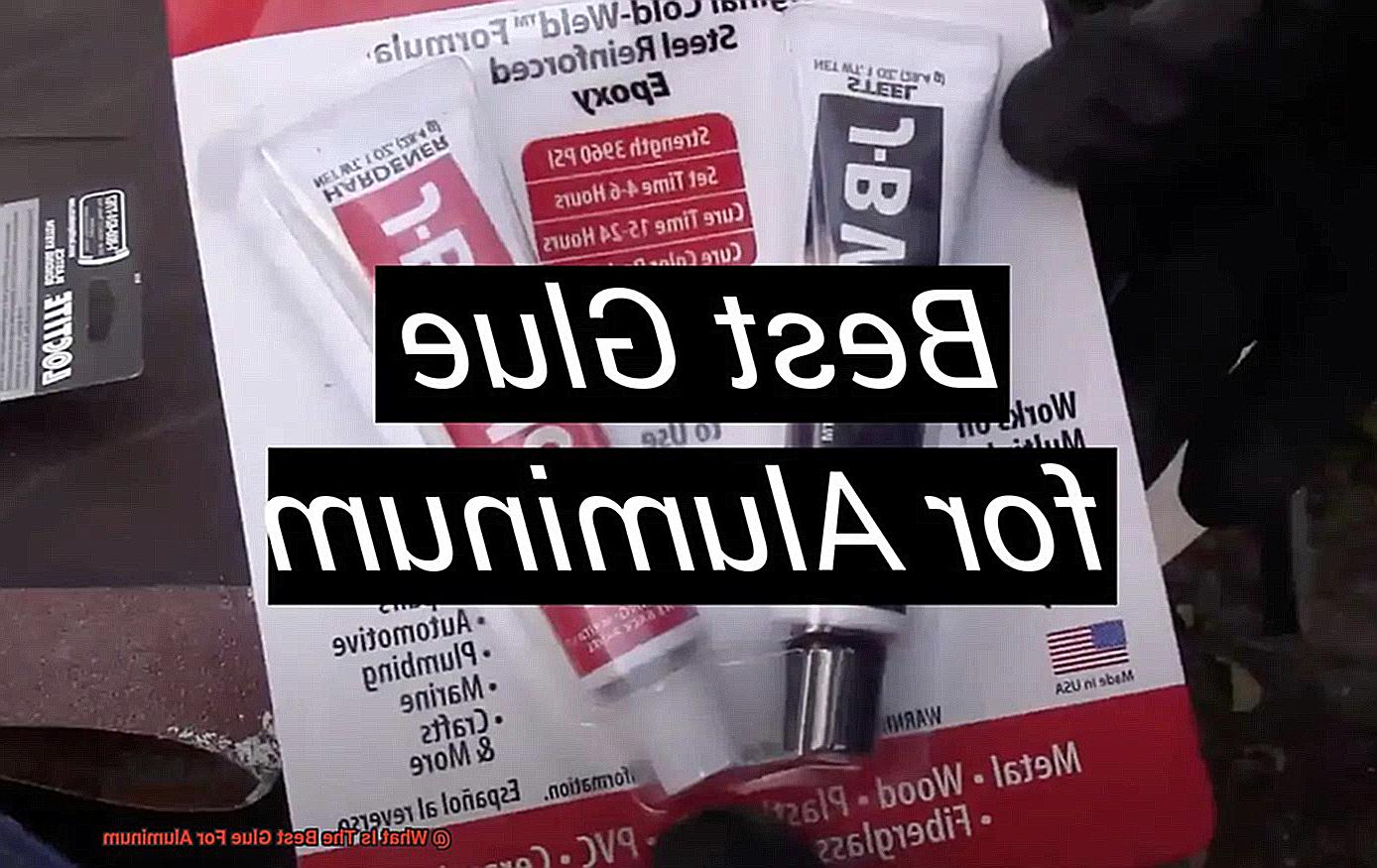
Imagine the frustration of attempting to unite two aluminum pieces, only to have them part ways due to a stubborn layer of dirt or grease. No, thank you. Our first step is to meticulously cleanse the aluminum surface. Grab a trusty degreaser or isopropyl alcohol and scrub away any oils or contaminants that could impede the adhesive’s ability to form a formidable bond. Once the cleaning is complete, rinse the surface with water and allow it to dry thoroughly before proceeding.
Step 2: Embrace Texture (Gently)
Now that our surface is pristinely clean, let’s give it a touch of texture. We’re not aiming for towering mountain ranges here; just a subtle roughening will suffice. This can be achieved by delicately sanding the surface with fine-grit sandpaper or employing a gentle wire brush. The objective is to provide the adhesive with an increased surface area to cling onto, ensuring a connection that is unyielding. However, exercise caution and avoid excessive sanding, as we do not wish to compromise the structural integrity of the aluminum.
Step 3: Banish Those Intrusive Particles
After bestowing our surface with texture, it is time to bid farewell to any unwanted particles that may have taken refuge during our sanding escapade. Grab a pristine cloth or a burst of compressed air and gracefully sweep away those pesky intruders. Our goal is to present a surface that is not only pristine but also smooth, ready to embrace the adhesive’s enchantment.
Applying the Adhesive to Bond Aluminum
In order to create a strong and durable bond between two aluminum surfaces, we need to carefully consider the type of adhesive, surface preparation, and application techniques. Let’s explore the exciting journey of applying adhesive to bond aluminum.
First off, let’s talk about our adhesive superhero – epoxy. Known for its high strength and excellent bonding properties, epoxy adhesives are the top choice for bonding aluminum. These amazing adhesives consist of two components – a resin and a hardener – that work together to create a bond that can withstand high temperatures and harsh conditions. Mixing these components right before application is crucial for optimal bonding performance.
But before we dive into the realm of adhesives, we need to prepare our aluminum surfaces properly. Think of it as a luxurious spa treatment for your aluminum. It’s essential to remove any dirt, oil, or contaminants that could hinder the bonding process. Using solvents like acetone or isopropyl alcohol ensures a thorough cleaning. Remember to let the surfaces dry completely before moving on to the adhesive application.
Now comes the thrilling part – applying the adhesive. Follow the manufacturer’s instructions meticulously to achieve outstanding results. The correct ratio between the resin and hardener is vital for a successful bond. Apply the adhesive evenly on both surfaces, ensuring complete coverage without going overboard. Tools like brushes or applicators can help achieve an even distribution. We want our adhesive to be just right – not too little, not too much.
With our adhesive properly applied, it’s time to bring our aluminum surfaces together in a joyful reunion. Applying pressure is crucial to promote bonding. You can use clamps, weights, or any method that ensures good contact between the surfaces. We want them to stick together like best friends forever.
But hold your horses, my friend. Our adhesive needs time to work its magic. The curing time for epoxy adhesives varies, so be patient and refer to the instructions. Let the bond fully cure before subjecting it to any stress or load. This ensures a bond that can withstand anything life throws at it.
While epoxy adhesives steal the show, there are other adhesive options available for bonding aluminum. Cyanoacrylate (super glue), polyurethane, and acrylic adhesives each have their own advantages and limitations. Consider factors like your specific application, environmental conditions, and desired bond strength when choosing the best adhesive for your aluminum project.
Curing Times for Different Adhesives
Prepare to be amazed as we unravel the mysteries of glue transforming from a sticky mess to an unbreakable bond. Grab your lab coats and let’s embark on this thrilling journey together.
Curing time, my friends, refers to the magical moment when an adhesive fully dries and forms a solid connection between two surfaces. But hold on tight, because each adhesive has its own unique curing time. It’s like watching a race against time, except instead of sprinting, we’re witnessing glue work its magic. Brace yourselves for an exhilarating ride.
First up is our superhero, epoxy. Renowned for its Herculean strength and durability, epoxy adhesives are a force to be reckoned with in the world of aluminum bonding. But here’s the twist – epoxy curing times can range from a lightning-fast few minutes to a leisurely several hours. The specific product and manufacturer determine the pace of this epic transformation. So, my friends, heed the instructions closely. Remember, patience is key when it comes to witnessing the full power of epoxy.
Now, let’s turn our attention to the beloved cyanoacrylate, or as we affectionately call it, super glue. This adhesive is famous for its lightning-quick bonding abilities. Some super glues set in mere seconds. But wait, don’t be fooled by its speedy display. The full curing time for cyanoacrylate adhesives can vary from a few minutes to several hours. So, while it may be tempting to test the strength of your bond right away, exercise some restraint and allow it ample time to reach its full potential.
But fear not. Our trusty sidekick, polyurethane adhesives, is here to save the day. These versatile heroes offer both flexibility and resistance to impact – perfect for applications that require a touch of movement or vibration. However, be prepared for a longer wait, my friends. Polyurethane adhesives take their sweet time to fully cure, ranging from a few hours to several days. It’s like waiting for a slow-cooked meal to reach perfection – the longer you wait, the more delectable the result.
sMrY7_V0I5A” >
Conclusion
When it comes to bonding aluminum, finding the best glue is crucial.
Aluminum is a tricky material to work with, but fear not. I’ve done my research and found the top contenders for the title of “best glue for aluminum.”
After testing various options, it’s clear that epoxy adhesives are the way to go. Their strong bond and excellent durability make them perfect for joining aluminum surfaces.
Another great choice is cyanoacrylate glue, commonly known as super glue. Its quick-drying formula and ability to create a tight bond make it ideal for small projects or repairs.
Whether you’re working on DIY projects or fixing broken aluminum items, these glues will have you covered.

